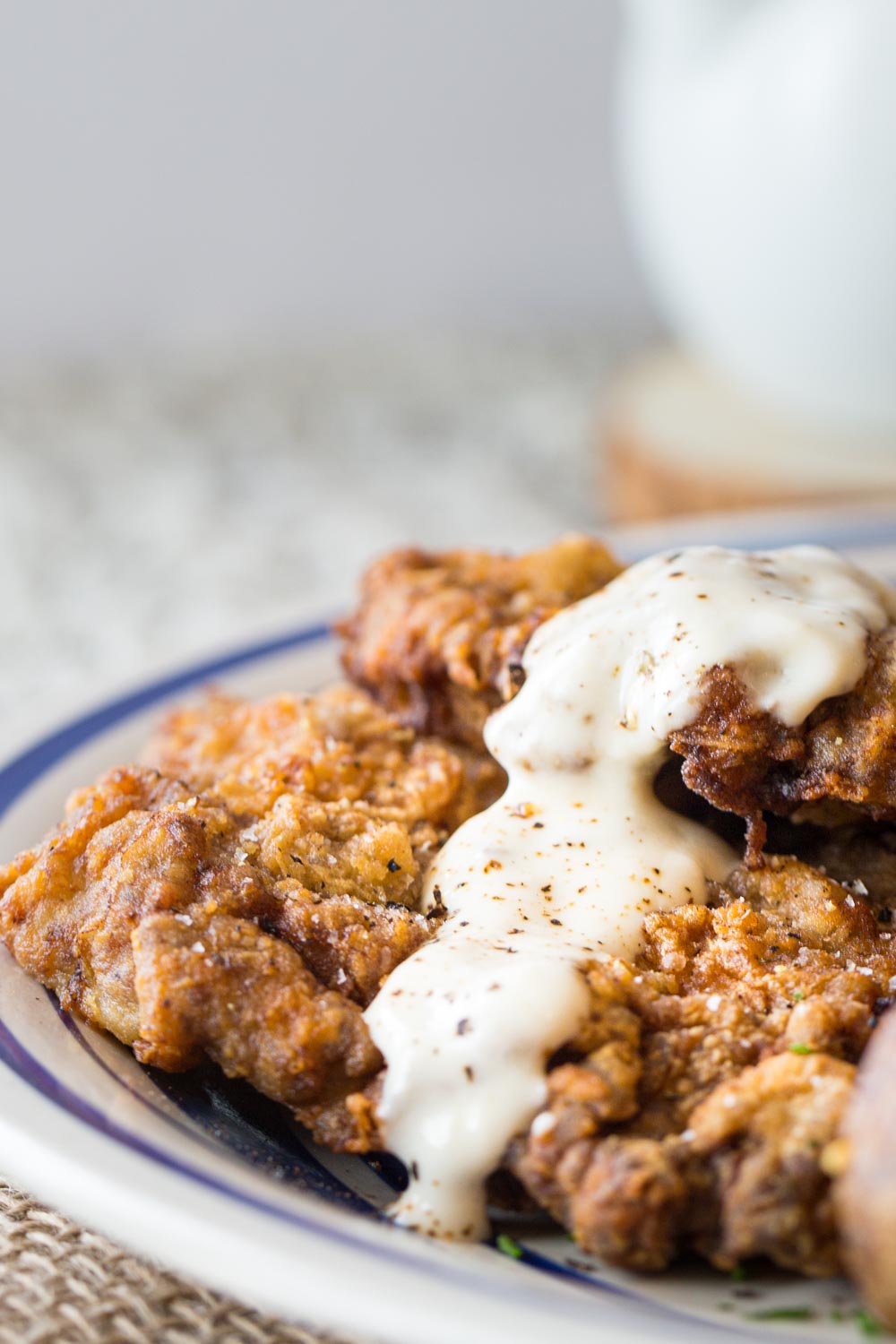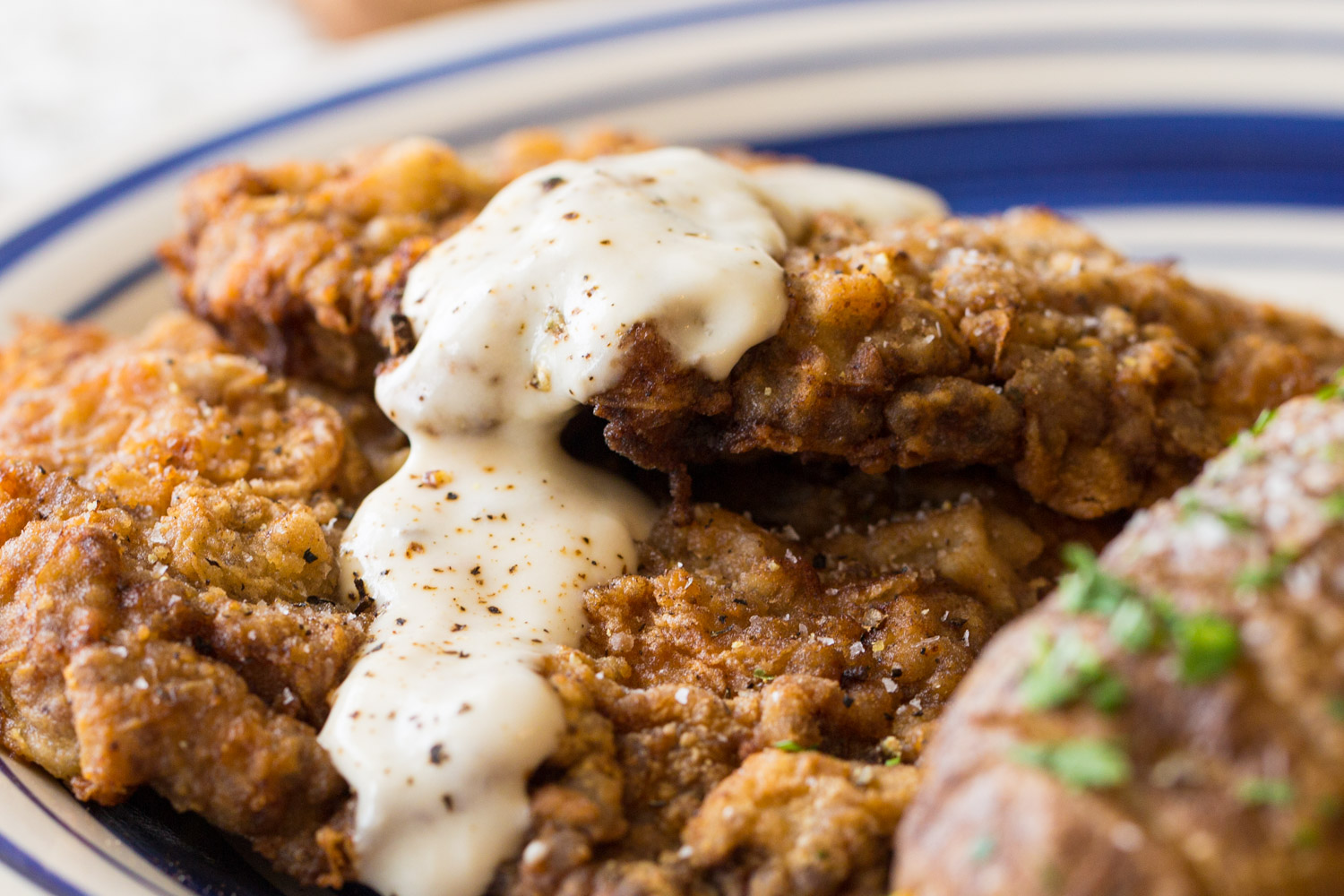How to Keep Batter from Falling Off Chicken Fried Steak: A Frying Fiasco Rescued
As a Texan born and raised on chicken fried steak, I consider a fallen batter catastrophe tantamount to culinary treason This Southern staple deserves a crispy armor that clings mightily to every tender morsel within Sadly, nefarious forces are constantly conspiring to compromise our crunchy coats. Moisture, impatience, and oil temperature all collude in clandestine assaults against adhesion.
But fret not, fellow fryers! This comprehensive guide will equip you with the knowledge to defend your chicken fried domains from insurgent batter. With the proper precautions in place, no steak shall surrender its covering without a fight Arm yourself with these tools and tips to heroically vanquish the batter slippage scourge The battle can be won!
Assessing the Adhesion Adversaries
To prevail against our batter nemeses, we must first know them. The primary enemies of adhesion are:
Moisture – Excess water is kryptonite for crispiness. Residual surface moisture prevents flour and batter from properly sticking. Dryness is essential.
Oil Temperature – Too hot and the coating scorches before setting. Too cold and it absorbs grease, becoming soggy and sliding off. Precise temperature control is paramount.
Insufficient Coating – Skimpy breading easily detaches. Generous, even coats withstand frying forces better. Attention to detail is key.
Rough Handling – Aggressive flipping and prodding can dislodge even sturdy batter. A delicate touch preserves the precious coating.
These troublemakers must be actively neutralized to protect our crunchy barricades. Forewarned is forearmed. Now let’s suit up and do battle!
Strategic Moisture Removal
Eliminating excess water is crucial before breading. Pat steaks dry with paper towels and allow to air dry for 10-15 minutes. Sprinkle with a light dusting of flour to absorb stray drips. Salt the steaks at least 20 minutes prior to lock in moisture. Avoid ice cold steaks straight from the fridge – let meat warm slightly to minimize condensation. Prep your batter extra cold so it thickens up. Follow the moisture mitigation protocols and your coating will cake on cleanly.
Oil Temperature OCD
Obsessively control your oil temperature for optimal adhesion. Invest in a deep fry thermometer – the $20 is worth every penny. Heat oil to 350-375°F on medium heat before carefully lowering in floured and battered steaks. Maintain this zone throughout cooking. Too low and coating absorbs oil, too high and it burns fast. Adjust heat as needed and fry in small batches. Let oil reheat fully between steaks for consistency. Precise temperatures yield sturdy, resilient crusts.
Breading Bonanzas
Maximize adhesion with these advanced breading techniques:
-
Flour Dip – Lightly flour steaks before batter to rough up surface and soak up drips
-
Season First – Salt and pepper steaks so flavors infuse – just a pinch in batter
-
Buttermilk Dunk – Dip in buttermilk before battering to increase coating tackiness
-
Rest Period – Let battered steaks sit for 5+ minutes before frying to let coating hydrate
-
Press and Pack – Press thick, even layers of batter into the steaks
-
Double Dredge – Do flour, batter, flour again for an extra fortified fortress
-
Cornmeal Crunch – A sprinkle of cornmeal in batter adds appealing texture
With a multi-step breading blitz, your batter will cement onto those steaks like steel plating. Onward to flavor country!
Handle with Care
Even the heartiest homemade batter is still sensitive. Exercise patience and care when maneuvering those steaks:
-
Use slotted spoons and spatulas for gentle flipping
-
Resist poking or prodding too soon – let batter initially set up undisturbed
-
Fry in roomy vessels with at least 1-inch oil so coating can float freely
-
Blot freshly fried steaks on paper towels to remove excess grease
-
Allow steaks to rest 5+ minutes post frying before slicing to solidify crust
A deft yet delicate hand preserves your coating integrity from fryer to plate.
Troubleshooting Tips
Should your chicken fried quest go awry, attempt these troubleshooting tips:
Soggy Coating – Oil too cold. Raise temp to 350°F+
Burned Coating – Oil too hot. Lower temp and adjust burner.
Falls Off in Chunks – Insufficient adhesion. Allow batter to hydrate before frying. Press into steaks firmly. Consider double dredging.
Won’t Stick to Steak – Meat too wet. Dry steaks thoroughly and add flour dip before batter.
The Takeaway
Besting batter slippage and retaining that craveable crunch may seem a daunting task. But armed with the right techniques and a vigilant eye on temperature, moisture, and handling, you will be victorious. With persistent practice, the incredible edible armor of chicken fried steak can be mastered by all. Soon you’ll be serving Southern pride with the batter still gloriously intact. So heat that oil, prep those steaks, and ready the flour – it’s time to fry!

What is the Difference between Chicken Fried Steak and Country-Fried Steak?
Chicken fried steak is deep-fried and country fried steak is pan-fried. Because most home cooks fry in a saute pan or cast-iron skillet rather than a deep fryer, home versions will lack some of the qualities of restaurant chicken fried steak, which is submerged in hot oil allowing the batter to run and expand, eventually getting very crispy. Most home cooks still refer to their dish as chicken fried steak and would argue that the names are interchangeable. It really comes down to using quite a bit of oil in the pan, giving the batter lots of room to fry in where it develops a crunchy exterior.
Additionally, when you pan fry your meat in a skillet, youll have the pan drippings to create your gravy. This gravy will have a golden tint that pure white cream gravy will not have. Many cooks think this gives the gravy extra flavor.

How to Make the Best Gravy for Chicken Fried Steaks
Well, I told you I was going to give you my chicken fried steak secret, and here it is. Its really a secret my grandmother handed down to me from using in her multiple Texas cafes. For the best gravy–award-winning, trophy gravy, always use evaporated milk.
I know! I have seen so many people look at me like why? Why does that work? How would that matter?
Evaporated milk creates a warmer, richer, buttery gravy that heavy cream or whole milk just cannot replicate. Evaporated milk (not to be confused with condensed milk, which is a sweet dessert-like product) is canned milk, and as such, it is heated in the canning process giving it notes of caramel and toastiness. My recipe also calls for seasoning with garlic powder and onion powder and a drop of lemon juice for brightness. Im telling yall, its the gravy to end all gravies.
Since we prepared the chicken fried steaks in our large skillet we will also be able to use those decadent pan drippings for a creamy country gravy with notes of the steak. Occasionally this gravy will look like a brown gravy but since brown gravy is a rich dark gravy, I like to describe it as golden. The pan drippings give it this beautiful color and flavor.
To finish the chicken fried steaks you can plate up with mashed potatoes or green beans and coat the chicken fried steak with plenty of gravy!

Now lets look at some common problems:
How to Make the Best Chicken Fried Steak | Allrecipes
FAQ
Why does my batter fall off my chicken fried steak?
To keep the batter from falling off chicken-fried steak, ensure that the steak is properly prepared before battering. Start by patting the steak dry with paper towels to remove excess moisture, which can prevent the batter from adhering. Additional, press the coating into the steak to adhere.
How to keep the breading on chicken fried steak?
To ensure breading stays on chicken fried steak, start with a double dredge (flour, egg wash, flour again) and let the breaded steak rest for at least 15 minutes, allowing the breading to absorb moisture and become tacky.
